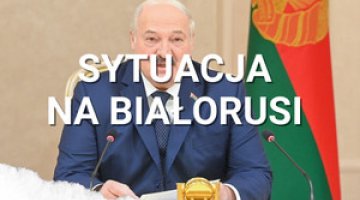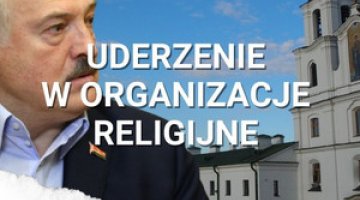Towards a totalitarian state. Belarus cracks down on religious organisations
On 5 January, an amendment to the legal act ‘On freedom of conscience and religious organisations’ was published in the Belarusian legal register. The government justified this change in the law in terms of “the need to put the legislation in order with a view to its compliance with the constitution”, drawing on existing arrangements in countries such as Russia, Azerbaijan and Tajikistan. The amended law obliges all local and nationwide religious communities in Belarus to submit to verification to determine whether they will retain the right to continue operating. At the same time, these organisations have been strictly prohibited from engaging in any activity that is not related to religious worship, including political activity.
The UN Human Rights Committee and human rights defenders have expressed their concerns about this threat to freedom of worship and religious activity in Belarus. The tightening of regulations in this sphere follows other moves by the regime to crack down on social activity. As a result of similar restrictions against political parties implemented in 2023, only four of the 15 previously legal groups remained on the scene as of last October, all of whom are unconditionally loyal to the government. The regime has taken systemic measures to exclude any independent initiatives from the country’s political and social life in order to ensure that it has full control over the parliamentary elections scheduled for 25 February this year, and next year’s presidential elections in particular.
Less religious freedom
According to official data, 25 churches and religious associations are registered in Belarus. The Orthodox Church, which is subordinated to the Moscow Patriarchate, plays a central role with its 1733 parishes. The Catholic Church, with 500 parishes, and the Protestant denominations, which number more than 1000 local communities, also have a significant presence. Moreover, there are followers of Judaism and Islam engaged in religious activities as well. The amendment has not changed the provision on the ‘special role’ of the Orthodox Church, which clearly indicates that it is not the target of the new restrictions. Its presence in social life, including education, public spaces and the state-run media, has increased significantly as a result of Alyaksandr Lukashenka’s unprecedented turn towards Russia after dialogue between Belarus and the West collapsed in 2020.
The process of reviewing the legality of all the religious communities will begin in the middle of this year and take 12 months, but even at this initial stage the amended law should be seen as a step aimed at intimidating the most independent and active non-Orthodox communities. Catholicism and Protestantism, which are linked to the West and perceived by the regime as potentially the most subversive, are likely to become the main targets of the upcoming crackdown. The requirements set out in the amendment, such as the need to have structures in all of the country’s six regions, may exclude the smaller of the Protestant communities that have operated until now.
Explicit bans on the organisation of political actions and rallies by religious communities, on the use of non-religious symbols and on engaging in ‘anti-state propaganda’ or defaming the government in any way, are potential tools that could be used to shut down religious associations or parishes which are involved in activities that the regime sees as undesirable. It should be stressed that the very general definition of the grounds for proscription opens the way to arbitrary decisions by the government’s plenipotentiary for religions and nationalities, who can de facto act unilaterally. This is the first time this office has been given such far-reaching powers.
‘Polish Catholics’ under scrutiny
As for Catholicism, the new restrictions are linked to the Belarusian government’s anti-Polish policy, which intensified sharply after its dialogue with the West collapsed in 2020. The regime has been consistently destroying the Polish historical inheritance in the country (for example, there have been more than a dozen acts of vandalism at Polish cemeteries since June 2022) while spreading its anti-Polish historical narrative and eradicating the Polish language from local schools for the Polish minority (see ‘Eradicating Polishness. Lukashenka on the Polish national minority schools in Belarus’). The government is also working to completely de-Polonise the structures of the Catholic Church in Belarus.
In the eyes of the regime, Catholicism is a synonym for Polishness, which it often understands as a tendency towards subversive activity or at least of acting independently of the government. For this reason, for many years Polish priests have been systematically expelled from local parishes, while in recent months the regime has detained a string of clergymen on charges of ‘high treason’ or ‘extremism’, including priest Henryk Okolotovich from Volozhin and priest Vyacheslav Pialinak from Brest last November, as part of its policy of increased repression. There have even been cases of churches being closed under the pretext of carrying out essential repair and construction work, as was the case with the Church of Saints Simon and Helena in Minsk in September 2022. It is conceivable that the new regulations could be used to shut down parishes where the Polish minority has been particularly active.
A rigid political scene
In an effort to eliminate any elements that have been critical of the regime but are still formally legal, in early 2023 the government adopted a law on the rules of operation for political parties (see ‘Belarus: the pro-regime Belaya Rus party holds its founding congress‘). It obliged the 15 parties that were officially operating at the time to submit their applications for re-registration within three months. The parties had to meet new, more stringent requirements for these to be approved: for example, they were required to have structures in all the regional cities, while the minimum number of their members was raised from 1000 to 5000.
In early October 2023, the ministry of justice published a new list of legal political parties, which included only four factions: Belaya Rus, the Liberal Democratic Party of Belarus, the Communist Party of Belarus and the Republican Party of Labour and Justice. All of them have declared their unconditional support for the regime while expressing moderately or openly pro-Russian views. This is reflected in the cooperation between some of them and their Russian counterparts: for example, Belaya Rus does not hide its ties to United Russia, while the Liberal Democratic Party of Belarus was modelled on Vladimir Zhirinovsky’s LDPR, with which it has signed a cooperation agreement.
Meanwhile, all the opposition parties were banned, including those that had operated since the early days of Belarusian independence, such as the Belarusian Popular Front, the United Civic Party and the Belarusian Social Democratic Gromada. On 10 November 2023, during a meeting with the leaders of the positively verified parties, Lukashenka said that the existence of only “patriotic” and “constructive” factions was advisable while also expressing satisfaction with the fact that the political scene had been “purged” of “anti-constitutional” entities. He also stressed the need for a “responsible approach by politicians to the parliamentary elections” scheduled for 25 February this year, which will be combined with elections to local councils for the first time. The obvious goal of this crackdown is to prevent any kind of opposition groups from participating in the election campaign.
A totalitarian reality
Both the now-completed process of liquidating opposition parties and the restrictive steps against religious organisations that have been planned for the coming months represent the latest stages in the Belarusian system’s evolution from an authoritarian to a fully totalitarian model, a process which began with the political crisis following the 2020 presidential election. Despite successfully intimidating all of the regime’s opponents or forcing them to emigrate over the past three years, Lukashenka still fears an outbreak of protests on a scale similar to the mass popular revolt in 2020. Therefore, in parallel to the introduction of the current repressive policies, his government has also taken systemic measures to stabilise the regime by creating a quasi-totalitarian political system.
As a result of the liquidation of independent political parties, the parliamentary elections in February will feature only candidates who are completely loyal to the government – the first time this will happen in the history of independent Belarus. This also marks the next stage of preparations for the 2025 presidential elections; in the past, these elections have become the most critical tests of the regime’s durability. In turn, the upcoming restrictions on religious organisations and communities are primarily aimed at completely blocking any of their political and social activities that are inconsistent with the official policy. At the same time, it is unlikely that the regime will completely liquidate the structures of any of the denominations that operate in Belarus. It will primarily use the amended legislation to restrict the activities of the Protestant and Catholic communities, which are most closely linked to Western culture.




